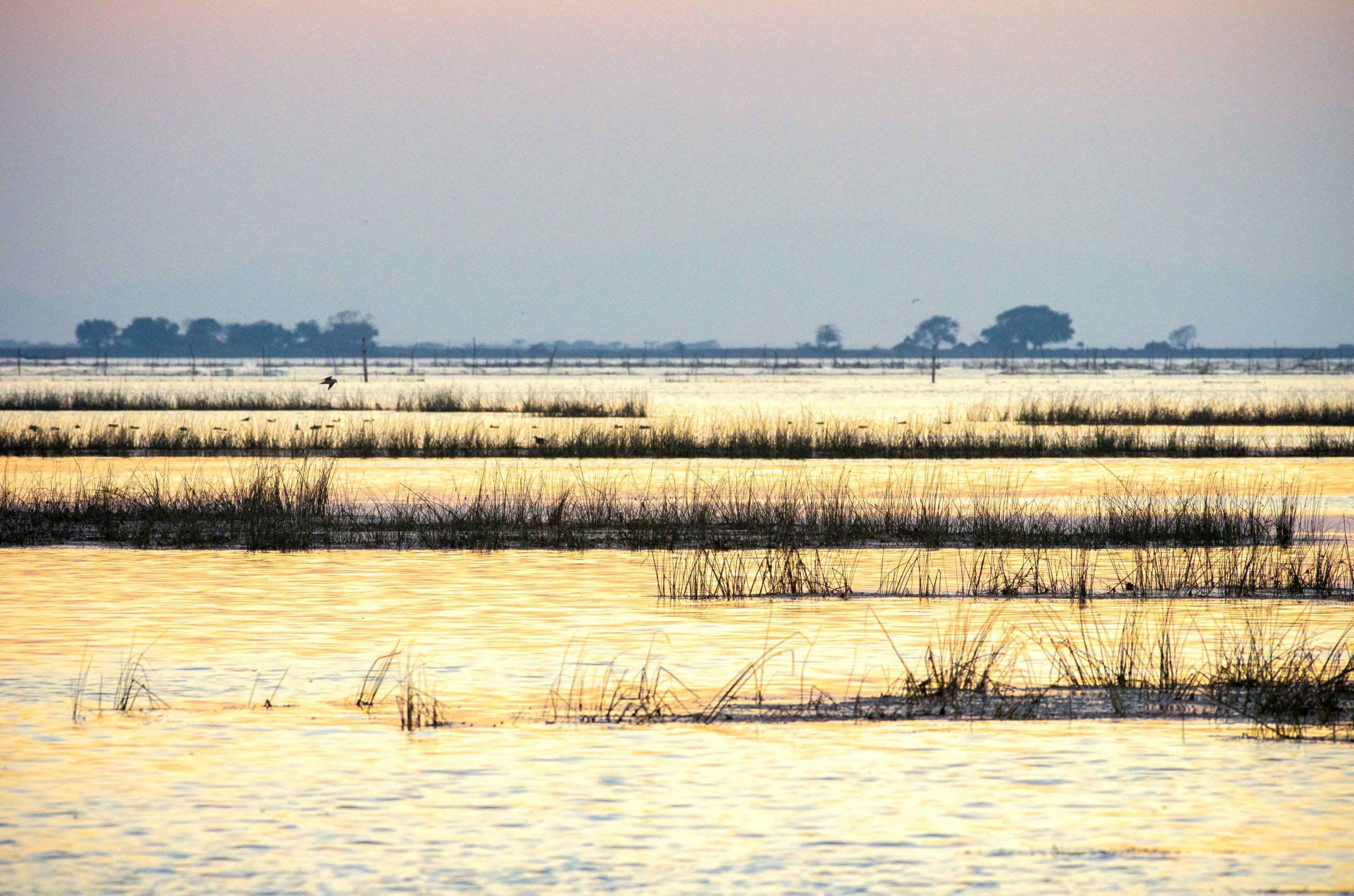 Listen to this article
•
15:34 min
Listen to this article
•
15:34 min
The sentries are visible well before the tiny island. Rows of cormorants and spot-billed pelicans are perched watchfully on the boundary markers of the Nalabana Bird Sanctuary in Odisha. We watch the birds for a moment until the waves bring the boat a bit too close, and the pelicans take off, skimming gracefully over the water.
While Chilika Lake (or lagoon) is world-renowned, Nalabana Bird Sanctuary, the 15-sq-km island that is part of its core area, is little-known. Reaching the island requires a 1.5 hour-long boat ride from Barkul, one of the gateways to Chilika. As our speedboat moves over the waves, there is ample time to watch seagulls wheeling and skimming over the water or harassing the local fishermen as they bring in their nets.
Cover photo: Nalabana, or Nalban, literally means “weed-covered island” in Odia.
Stunning diversity
Lakhs of migratory birds of 140+ species arrive at Nalabana every year. Rare or threatened species such as the Asian dowitcher (Limnodromus semipalmatus), the critically endangered spoon-billed sandpiper (Calidris pygmaea), and Pallas’ fish eagle (Haliaeetus leucoryphus) are often recorded as part of this crowd.
We see the vast flocks — pintails, whistling ducks, seagulls, and waders — even before we sight the island. Every year in the monsoon, the waters rise, and the sanctuary is completely submerged. The annual submergence is an important part of the natural cycle maintaining this unique habitat. The varying water depths and different substrates of the island provide a variety of habitats for numerous plant and bird species, contributing to Nalbana’s high diversity.
Once the island emerges post-monsoon, salt-marsh species like Salicornia brachiata begin to grow, and once the ground dries, grasses appear, creating a critical nesting habitat. However, the annual submergence frequently washes away the nests of gull-billed (Gelochelidon nilotica) and river terns (Sterna aurantia), leading the BNHS to suggest the building of floating platforms to act as nest beds. While the forest department constructed these in Nalabana, the birds did not seem to be using them.

While tourists may only go up to the boundary markers and birdwatch by boat, researchers and officials are allowed to visit the island with special permission. However, bird enthusiasts may visit the sanctuary (as well as other nearby bird-rich areas like the must-visit Mangalajodi) during the National Chilika Bird Festival, held for a few days each January. Once on the island, visitors navigate the crisscrossing channels on manually-rowed boats to reduce disturbance. Three watchtowers and regular patrols allow the Forest Department to protect the island sanctuary.
Floating quietly down the channels, we marvel at the diverse birdlife. Grey-headed swamphens (Porphyrio poliocephalus) pick their way through Phragmites patches. Bar-headed geese feed on Cynodon dactylon. One of the flock bears an orange ring on its long neck; it is “tagged” and under study to understand the movement and behaviour of bar-headed geese. Raptors wheel overhead, and in the distance, a flock of flamingos leaves us in awe.
Threats to a rich habitat
While fishing within the sanctuary is banned, illegal fishing does take place. Despite it being surrounded by water, a surprising threat to Nalabana is local buffalo herds. Capable of swimming across the shallow waters, they reach Nalabana from nearby villages and feed on reeds and grasses.
The growth of weeds and invasives such as water hyacinth around Nalabana is a concern, negatively impacting birds and local fishers. The choking of the inlet channel that connects Chilika Lake to the sea has reduced salinity in the lake, allowing more of these freshwater weeds to grow and affecting fish populations.
Nalabana is a rich habitat for threatened and rare flora species such as Salicornia. This plant is collected during the dry season when water levels subside. Several seagrass species thrive in the seagrass beds around the island and serve as nurseries for fish, molluscs, and invertebrates, which in turn provide food for the lagoon’s avian inhabitants.
Pollution in Chilika is a growing issue that impacts Nalabana as well — with an increase in chemical-based industries, prawn culture and intensive agriculture, the presence of toxic heavy metals such as mercury, cadmium, and lead has been reported in the water. Tourism also contributes to the problem, with a large number of mechanised diesel boats operating and increasing the area’s noise and air pollution. Tourists also bring in litter and plastic waste.

Coexisting in paradise
Nalabana serves as an important seasonal habitat for birds and is part of a larger network of wetlands. While habitat degradation and fragmentation remain a threat to all wildlife, the existence of multiple interlinked habitats such as these, both within the “Protected Area Network” and outside of it, enable birds and humans to coexist and thrive despite the myriad issues they face.
Nalabana is home to many unique species, from plants to invertebrates and birds. The aquatic plant species and seagrass meadows provide an important nursery for invertebrates. Invertebrates are food for fishes and molluscs, which in turn sustain the renowned waterbirds of Chilika.
Protecting Nalabana and its birds must involve an umbrella strategy that conserves the habitat that sustains them. Such a strategy must also take into account local communities that depend on the wetland and ensure that conservation is inclusive and sustainable over the longer term. It must also address the growing problem of pollution that impacts humans and wildlife alike.














